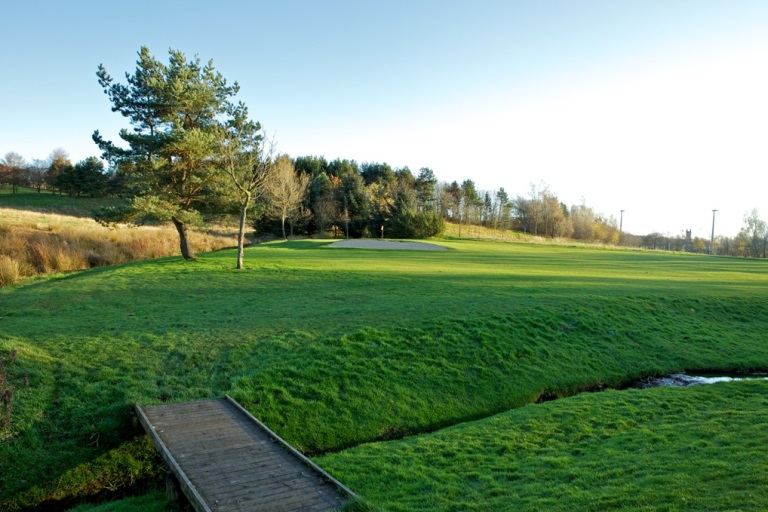
IS exercising outdoors better than working out indoors?
And which activity can leave you in a better frame of mind – and make you more active in the long run?
Researchers are aiming to find the answers during a year-long study into exercise habits.
The study will focus on Xcite Bathgate, one of West Lothian's most popular leisure facilities. It's hoped up to 100 people - referred by local doctors to use the facilities - will take part.
Half will be allocated indoor activities, such as swimming, gym sessions and classes - and half outdoor exercise, such as gardening, walking or golf.
Dr. Ruth Jepson from the University of Stirling, who's leading the research, said the study would follow participants over the next year to find which group enjoyed exercise the most and which stuck with a more active lifestyle as a result.
"We'll also look at the social and mental health impacts of different types of exercise," said Dr. Jepson. "Recent evidence suggests that exercising outdoors may offer additional health and well-being benefits, but it will be interesting to see if this is the case with the sample group in Bathgate."
Supporters hope the research project - the first of its kind in Scotland - will help councils and leisure trusts plan future health programmes and facilities, including new outdoor spaces, "Green Gym" environmental programmes, and walking routes.
The project will start in May, with the final report being published in 2014.
The research has been commissioned and undertaken by the Scottish Collaboration for Public Health Research and Policy (SCPHRP) - located within the University of Edinburgh - and also the University of Stirling's Centre for Population Health and Public Health Research.
Dr. Jepson said: "Physical activity has benefits for physical and mental health, including reducing a person's risk of chronic diseases such as diabetes, heart disease and cancer. But is it better to do this in a gym or in the great outdoors?
"Exercise Referral Schemes are common throughout Scotland and typically involve a GP referring someone sedentary or overweight for a 12 week programme at a local leisure facility, usually for free or at a reduced cost. Usually participants take part in activities indoors, such as swimming or using the gym.
"As part of the project, the Bathgate volunteers will be offered the opportunity – picked at random - to take part in 12 weeks indoor or outdoor activities. They'll be asked to stick with their selected activity programme for 12 weeks - but can then do what they want after this.
"The indoor participants will receive their own tailored exercise programme, as is normal for people on local referral programmes.
"The outdoor participants will get the chance to do gardening-style work in a 'Green Gym' programme. Alternatively, they'll be able to go walking in the grounds of the Xcite Bathgate's Park of Peace - or have a round of golf on their nine-hole golf course.
"We're grateful to the staff of West Lothian Leisure, the trust running Xcite Bathgate; The Conservation Volunteers in Scotland, the charity behind the Green Gym programme; and the Community Greenspace team from West Lothian Council, for being active and enthusiastic partners in this study."
Chris Dickson, Health & Fitness Development Manager at Xcite, said staff were pleased to be involved.
He said: "Being asked to host this study, through the First STEP's Exercise Referral Programme, is a fantastic opportunity for us to have an independent evaluation of the services we provide.
“The success we have shown over the last six years has been evaluated but not to this extent. It also give us the opportunity to see whether extending our work further into the Green Gym will be provide an effective alternative referral pathway.”
"Some are even hoping the training provided by The Conservation Volunteers will help develop their own gardening skills!"
The Conservation Volunteers charity is keen to work with groups across the country setting up "Green Gym" projects - helping people improve the environment and their health at the same time. Find out more at www.tcv.org.uk/greengym
David Graham, Development Manager (Healthy Communities) from The Conservation Volunteers said: "The Conservation Volunteers are delighted to be working in partnership with Scottish Collaboration for Public Health Research and Policy, the University of Stirling, West Lothian Leisure and West Lothian Council and to deliver our own natural health service, the Green Gym, as part of this year-long study into exercise habits."
- For more information on the Scottish Collaboration for Public Health Research and Policy, please visit www.scphrp.ac.uk
- For information on the University of Stirling's Centre for Population Health and Public Health Research, please visit www.nm.stir.ac.uk/research/public-population-health.php
- West Lothian Leisure is a non-profit distributing organisation with charitable status, delivering sport and leisure services on behalf of West Lothian Council. Find out more at www.westlothianleisure.com
- The Conservation Volunteers charity has been reclaiming green places since 1959. Through its own environmental projects, and a network of 2,000 community groups, it helps hundreds of thousands of people across the UK to take responsibility for local green places. Green Gym is a registered trademark of The Conservation Volunteers. Find out more at www.tcv.org.uk
